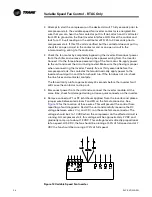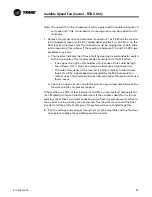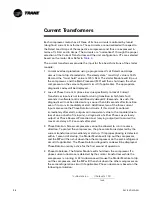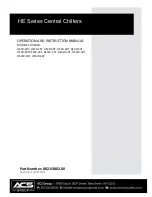
RLC-SVB05A-EN
11
IPC Overview and Troubleshooting
2
Place a small amount of Locktite 480 in the cap and put the end of the cable in
the cap. Refer to
Figure 7
.
Troubleshooting
problems with
multiple LLIDS
Troubleshooting bus communication problems can be challenging. It is
important to remember that all of the LLIDs communicate on the same two wire
communication bus, and derive their power from the same two wire power bus.
Since the LLIDs are effectively in parallel with all other LLID, certain LLID failures
or connector shorts can take down the entire bus, either the power bus, or the
comm bus. In the case of shorts, the offending connector identified by the
TechView Service Tool using Binding View. Most, if not all of the LLIDs will show
up to be “unverified”. Most of these kinds of failures must be tracked down
manually.
A problem will usually fall in one of four scenarios.
Connect TechView and go into binding view. One of the following scenarios
should be present.
•
All LLIDs verified (green smiling face(s)). Suspect a communication problem.
It may be necessary to unbind and rebind some or all of the LLIDs.
•
All LLIDs not verified (red frowning face(s)). Suspect a short or failed device.
•
1/2 of the LLIDs not verified (red frowning face(s)). If all LLIDs that are not
verified are on the frame or in the control panel suspect a communication
problem. If some of the LLIDs are on the frame and some are in the panel,
then suspect a short or failed device.
•
One or two of the LLIDs are not verified (red frowning face). Suspect LLID or
connector problem.
Use the following flow chart to troubleshoot multiple LLID problems. For this
procedure, a south pole magnet and TechView will be required.
Figure 7. : Cap












































